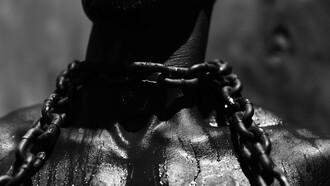Darjeeling – that quaint Indian hill station invented by the British east India company way back in the early 19th century is evocative of lush green tea estates, mighty Kanchendzonga (8586m), Darjeeling Himalayan railways (UNESCO world heritage) and of course the beautiful hill people, of which the Gurkhas – easily one of the bravest mountain tribes of the world residing here, makes for a truly mesmerising setup!
Growing up in India’s north east, which is India’s tribal heartland, it is but natural to have friends and acquaintances with tribal lineages and my first brush with people of Nepali origin was at my boarding school in the remote riverside Assamese town of Tezpur and Oh God! Aren’t they lovable?
Nepali folks are identified by surnames like Lama, Thapa, Gurung, Magar, Chetri .........and I remember one guy – Ang Tshering Lama, very athletic and an out-and-out outdoors guy with whom I shared a particularly good rapport. However, 30 years down the line, it was beyond my imagination to even comprehend what he has achieved in those unforgiving Himalayan mountains – five times Mt. Everest summit, credited him with conducting the world’s highest rescue mission and what have you.......
Nepalese people are hardworking and from my own firsthand experience during my childhood days in India’s North East and now with the meteoric rise of my mountaineer buddy – Ang Tshering Lama and others of his ilk, I presume that Nepalese Gurkhas and Sherpas have won worldwide accolades for their extraordinary contribution – Gurkhas for their bravery and Sherpas for their high altitude mountaineering skills.
Since I am not pretty sure whether my mountaineering buddy Ang Tshering Lama is a Sherpa or a Gurkha; each time he summits on top of those treacherous 8000rs, he is a Sherpa and when he dives on those daunting search & rescue missions, particularly during that devastating Nepal Earthquake of 2015, which was of 7.8 magnitudes that left over 5000 people dead, he is every bit a Gurkha to me!
Apart from Nepal and the Darjeeling Himalayas, there is a sizeable Gurkha presence in India’s North Eastern states like Assam, Sikkim, Nagaland, Mizoram, Manipur, Arunachal Pradesh and Meghalaya. The hill station of Darjeeling is the 'Old Gorkha Station' and after a long and violent struggle led by Gorkha National Liberation Front (GNLF), a separate autonomous district council was created in 2012 which led to the formation of the present Darjeeling Gorkha Hill Council. Needless to say, the Darjeeling Himalayas and Kalimpong and the Dooars region are the bastions of the Gurkhas in India, a warrior tribe who have attained worldwide recognition for their valour, diligence and bravery.
As one of the world’s most fearsome combat fighters, the Gurkhas have served the British Army for 200 years and the royal Gurkha rifles are one of the world’s most cohesive infantry regiments. Likewise, the indomitable Gurkhas are an integral part of the Indian Army as well with as many as 7 Gurkha Regiments. Six of them owed allegiance to the then British Army and post India’s independence in 1947, an exclusive regiment – The 11 Gurkha Rifles was raised.
While the British Army annually recruits 200+ Gurkha cadets primarily from Nepal where they are an ethnic minority, the Indian Army offers employment to around 1,300 Gurkhas. British Army makes it mandatory for all Gurkha recruits to be born and domiciled in Nepal. The competition is intense with 30,000 wannabe soldiers vying for 200-odd vacancies in the British regiment!
Darjeeling is often referred to as the “Queen of hill stations” and during British rule, it used to be the summer retreat of British administrators who were instrumental in introducing tea plantations. Today the world-famous Darjeeling Tea, renowned for its aroma, has worldwide acceptance and is one of the most preferred tea brands globally.
The whole of Darjeeling Himalayas have strewn with undulating tea estates and most of them are at least a century old. Glenburn, Makaibari, Happy Valley, Sourenee, Gomtee, Chamong .......are some of the top-end Tea Estates surrounding Darjeeling and have a glorious heritage, which is every bit colonial British. Darjeeling tea is amongst the world's most expensive tea brands and prices per Kg could be as high as USD $ 850+. Makaibari Tea in particular has always been uber expensive, pegged at around USD$ 1800 per Kg. A number of tea estates have opened up their Victorian-era tea bungalows and actively promote the concept of tea tourism for the benefit of discerning international visitors.
Glenburn Tea Estate, an 1860’s built tea company, has been a pioneer in promoting the concept of uber-luxury colonial tea tourism in Darjeeling. Their specially curated tea holidays are top notch offering the quintessential “Bungalow Holiday” experience – spacious British era rooms, vintage wooden floors (Burma Teak), cast iron windowpanes, high ceilings and intimate balconies offering uninterrupted views of the awesome Kanchendzonga – the third highest mountain in the world.
The Glenburn experience isn’t just immersive, its every bit rejuvenating as well, with well-thought-out itineraries that offer guided tea factory visits, tea tasting, hiking & soft treks, cooking classes as well as a variety of massage treatments to heal your body-mind-soul. No wonder, one of the world’s renowned travel & lifestyle publications Condé Nast traveller best sums up the Glenburn tea holiday experience thus – “A corner of heaven - Stunning scenery, old-fashioned elegance and the opportunity to see the rituals of tea production make Glenburn tea estate a compelling blend”.
Compelling indeed it is, but Darjeeling – the bastion of Gurkhas, which was so tenderly developed by the British East India Company, first as an army outpost and later on as a summer resort for serving British officials, has lost much of its sheen due largely to a multitude of problems – political unrest, overcrowding or unrestricted tourism surpassing the carrying capacity and rapid urbanization being the principal causes. Darjeeling Himalayas being an ecologically sensitive region, the mandarins of India and the state government of West Bengal should have been more responsive in safeguarding Darjeeling’s fragile ecosystem. After all, isn’t Ecology all about the interdependence of flora & fauna with the natural surroundings? Today, Darjeeling is a sad tale of retarded growth and the Gurkhas ironically have no time to bask in the ethereal beauty of the awe-inspiring Kanchendzonga nor appreciate the serenity of the undulating tea estates that produce some of the world’s most expensive Black Tea! For the Gurkhas, the grind continues as the struggle for existence becomes more daunting.
The Gurkhas are a unique lot and they are particularly adept at infantry roles that require endurance, agility and a tremendous amount of bravery. The Indian army has for a long time been deploying Gurkha soldiers in the world’s highest battlefield – Siachen Glacier as well as in anti-terror operations in India’s North East. No wonder, the Gurkha rifles are the deadliest and also the most decorated of all the regiments in India. They have been an integral part of the British army for more than 200 years and The Royal Gurkha rifles’ soldiers are amongst the deadliest infantry soldiers in the world with two exclusive regiments – one based out of Brunei and the other at Shorncliffe (UK), which have been offering world-class infantry services to the highly acclaimed British Army.
Their legendary and extreme devotion to warfare has influenced the British Army to induct Gurkha soldiers in their elite SAS unit (who dares win regiment) and are frequently used in covert military operations and counter-terrorism operations. Their most recent operation was on 16th May 2021 in Syria when Gurkha soldiers captured a dozen armed Islamic terrorists in a daring military raid that made global headlines.
Gurkha soldiers have won The Victoria Cross, Britain’s highest gallantry award for a record 26 times, which in itself is self-explanatory viz-a-viz the Gurkha soldier’s unconditional dedication towards protecting Great Britain.
If the government is proactive and there is every reason to believe they will, a turnaround of fortune is a possibility as the revival of Darjeeling’s socio-political landscape is directly linked to the welfare of the Gurkhas, whose contribution to not just India but the whole world in terms of their military competence is an undeniable fact.
The war memorial, bang in the centre of Batasia Loop – a railway bend through which the Darjeeling Himalayan Railways operates is a place of great military significance as it is dedicated to those gallant Gurkha soldiers who were martyred after India’s independence in 1947. Befitting Darjeeling’s image as the Gurkha heartland, a one-of-its-kind Gurkha war museum is coming up at Ghoom’s (Batasee Loop), thereby nicely complimenting the Gurkha war memorial. Once operational, visitors will be able to view military accoutrements, insignias, and rare photographs along with souvenirs. According to Gurkha sources, the cynosures of all eyes are the medals, some of which date back to the first world war. India Inc. cannot afford to neglect Darjeeling and the indomitable Gurkhas anymore. A united Gurkha is good for India. Let’s hope the Gurkha war cry – “Jai Maa Kali, Ayo Gurkhali”, which literally means “All hail Goddess Kali, The Gurkhas are here” reverberate and ushers in a new era of peace, prosperity and well-being for a tribe who are considered to be the fiercest on planet earth.















